Local News
How effective are Canada’s hate speech laws in combating anti-Semitism?
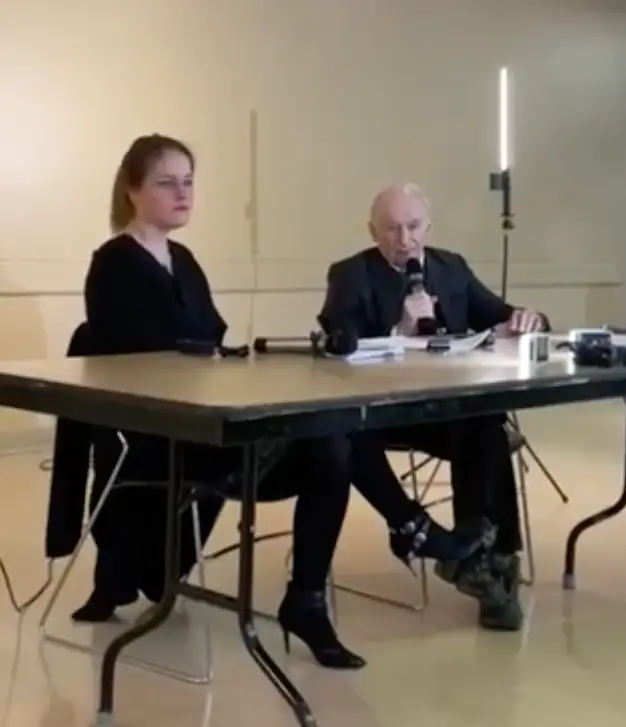
By BERNIE BELLAN Are Canada’s hate speech laws at all effective in combating what has been an outpouring of anti-Semitism since the Hamas massacre of October 7?
That was the question discussed by two individuals with legal backgrounds – Lea Ross and David Matas, in front of an audience in the Multipurpose room of the Asper Campus on Tuesday, December 19.
The event was sponsored by The Jewish Federation of Winnipeg, Winnipeg Friends of Israel, and Bridges for Peace. There were about 75 people in attendance.
Lea Ross is a former lawyer who now works teaching musical conducting within the Winnipeg school system. She is also a former student of David Matas – having studied human rights law with Matas at the University of Manitoba law school. Ross also had a number of years experience at the Manitoba Legislature helping to draft laws.
The format for the evening, following introductory remarks, had Ross posing a series of questions to Matas about human rights laws and, following Matas’s answers, entering into further discussion with him about what he had said. Their exchanges moved along quite quickly and, after about an hour, members of the audience were also invited to ask questions.
Ross had also prepared a hand-out for audience members which listed “relevant federal and provincial laws related to hate speech and expression.
In her introductory remarks Ross noted that, since 2009, there have been approximately 2,000 hate crimes a year recorded in Canada. Ross observed that various professors at law school had stated that hate crime laws in Canada “are ineffective and largely symbolic.”
“It’s as if Canada passed a law and then walked away,” Ross oberved.
Having made her thoughts on hate laws here quite clear to the audience, Ross asked Matas the first of her series of questions: “What more can be done?”
Matas responded that we can “increase the sentences for hate crimes, but we can’t look at hate crimes alone.” Matas added that one of the defenses often offered by individuals charged with hate crimes is that what they had said was “the truth.” He explained that Section 319 (3) of the Criminal Code says, among other things, that “No person shall be convicted of an an offence… if he establishes that the statements communicated were true,” but Matas suggested that “truth is a problematic defense.” (One might think, for instance, of the contention that saying Israelis are guilty of “genocide” could be considered hate speech, but the most commonly heard rebuttal to that argument is that genocide can have various interpretations and therefore, it might be true.)
Further, Matas alluded to the difficulty even in initiating a hate crime charge under the Criminal Code of Canada (which added hate crimes to the list of criminal offences in 1985). According to Section 319 (6), “no proceeding for (a hate crime) offence shall be instituted without the consent of the Attorney General of the province in which the hate crime is alleged to have occurred.” (That difficulty was also cited by Prof. Bryan Schwartz in a talk he gave about antisemitism on university campuses in the Berney Theate on Thursday, November 30. My report on that talk can still be read on our website.)
Notwithstanding the difficulty in getting a hate crime charge laid, Matas did suggest that, if one were sufficiently motivated to do so, one could launch a private prosecution against an individual for a hate crime.
Matas also added that, “We’re not so much interested in how to make the (hate crime) laws better, it’s how to make the laws work” in the first place. For instance, he suggested, “you could use other offences in the criminal code that don’t require the consent of the attorney general.”
He brought up a recent instance in which a man in BC was charged with “indecent communication” for making threats against an Ottawa Jewish doctor in a phone call made to that doctor.
Ross brought up a section of the criminal code hate laws that refer specifically to “promoting anti-Semitism.” Section 319 (2.1) says: “Everyone who, by communicating statements, other than in private conversation, willfully promotes anti-Semitism by condoning, denying, or downplaying the Holocaust” is guilty of an offense. Ross wondered whether that section ought to be “broadened to target conspiracy theories” beyond the Holocaust?
She then brought up the hornet’s nest known as the internet, asking Matas what he thought could be done to better control the explosion of anti-Semitism on the internet?
Matas responded that “the first recourse shouldn’t be to the police, it should be to the internet providers…If hate speech violates the terms of service (of a particular provider), then they can cut them off.” (Matas also said he actually has read many of those interminable “terms of service” documents that are included in so many websites and apps. That in itself should get him some kind of special award.)
Now, lest one think that the Canadian Charter of Rights and Freedoms, which guarantees, among other guarantees, “freedom of expression,” Matas noted that “the Canadian Charter doesn’t apply to private companies.”
“France and Germany hold internet companies liable for what’s posted,” Matas pointed out.
Further to the issue of what constitutes antisemitic expression, Ross referred to the expression, “From the river to the sea, Palestine will be free,” noting that both Austria and the Netherlands have moved to have that expression banned. She wondered whether “Jews should move to have it banned in Canada” as well?
Again, Matas responded that the Charter’s right to free expression wouldn’t pertain to someone mouthing that expression on a university campus, as “the Charter doesn’t apply to universities.”
Thus, “if the (Federal) government were to ban it, it would be subject to the Charter, but if universities and private companies were to ban it,” the Charter wouldn’t apply, so it is conceivable that a university could act to prevent a student or students from voicing that expression. (At the end of this article I refer specifically of the case in which a University of Manitoba Nursing student was suspended for sharing anti-Semitic posts on Instagram.)
Yet, Matas wondered, “Do we start legislating expressions?”
Ross asked: “What can we do to better protect our youth from hate speech?”
Matas drew upon his own experience as a youth, when he saw a film about “stereotypes,” saying that film had a lasting impact upon him – and suggested that showing a film of that sort to students would be of great benefit.
Ross brought up the question of competing rights: The right to freedom of expression and the importance of protecting vulnerable groups. She wondered how we can maintain a balance? (Interestingly, in this same issue, we have two different articles, by Michael Posner and by Henry Srebrnik, both of whom explore the issue of how far the pendulum has swung in protecting so called “vulnerable groups,” which apparently doesn’t include Jews.)
Matas said: “Academic freedom has gone wild, but very often you’re dealing with conflicting rights. The balance lies in determining where the greater harm lies,” but right now, “the balance is totally tilted” in favour of those so called vulnerable groups.
Ross asked whether “we should ever go to human rights commissions” when it comes to trying to protect against hate speech?
Matas responded that “human rights commissions (which are products of provincial legislation) don’t deal with incitement to hatred.”
Speaking of provincial legislation, Matas further explained that “the Defamation Act (also a Manitoba statute) which refers to a “libel against a race, religious creed or sexual orientation” doesn’t allow for damages, which is why it’s almost never used.”
Yet, Matas added, “it’s not as if we have nothing now. What we have to do is make better use of existing laws.”
One could sue for libel under the Defamation Act if one believes they were libeled as an individual; however, there is no such thing as “group libel,” Matas observed.
When it came time for questions, I asked the same question of David Matas that I had asked of Bryan Schwartz when he spoke about anti-Semitism on university campuses. I noted that the Faculty of Nursing at the University of Manitoba had suspended the Nursing Association’s president for what were described as antisemitic posts on Instagram. (Apparently her suspension is still under appeal. At least that’s the only news I could find when I tried to search for an update on that story.)
Regardless whether the suspension is reversed or not, that student was suspended for what were described as “anti-Semitic posts.” I said to Bryan Schwartz and I said to David Matas: The Faculty of Nursing exhibited some intestinal fortitude. (And yes, I’m well aware that one might say, this was different. How would a Jewish patient feel knowing the nurse dealing with them might be an antisemite? Come on: There are all sorts of professions and positions about which we could say the same thing.) The fact is, as I said to David Matas: The surprise isn’t that more universities haven’t taken action in response to hate speech, the surprise is that one actually did.
Local News
Vickar Family cuts ribbon on new Tova Vickar and Family Childcare Centre
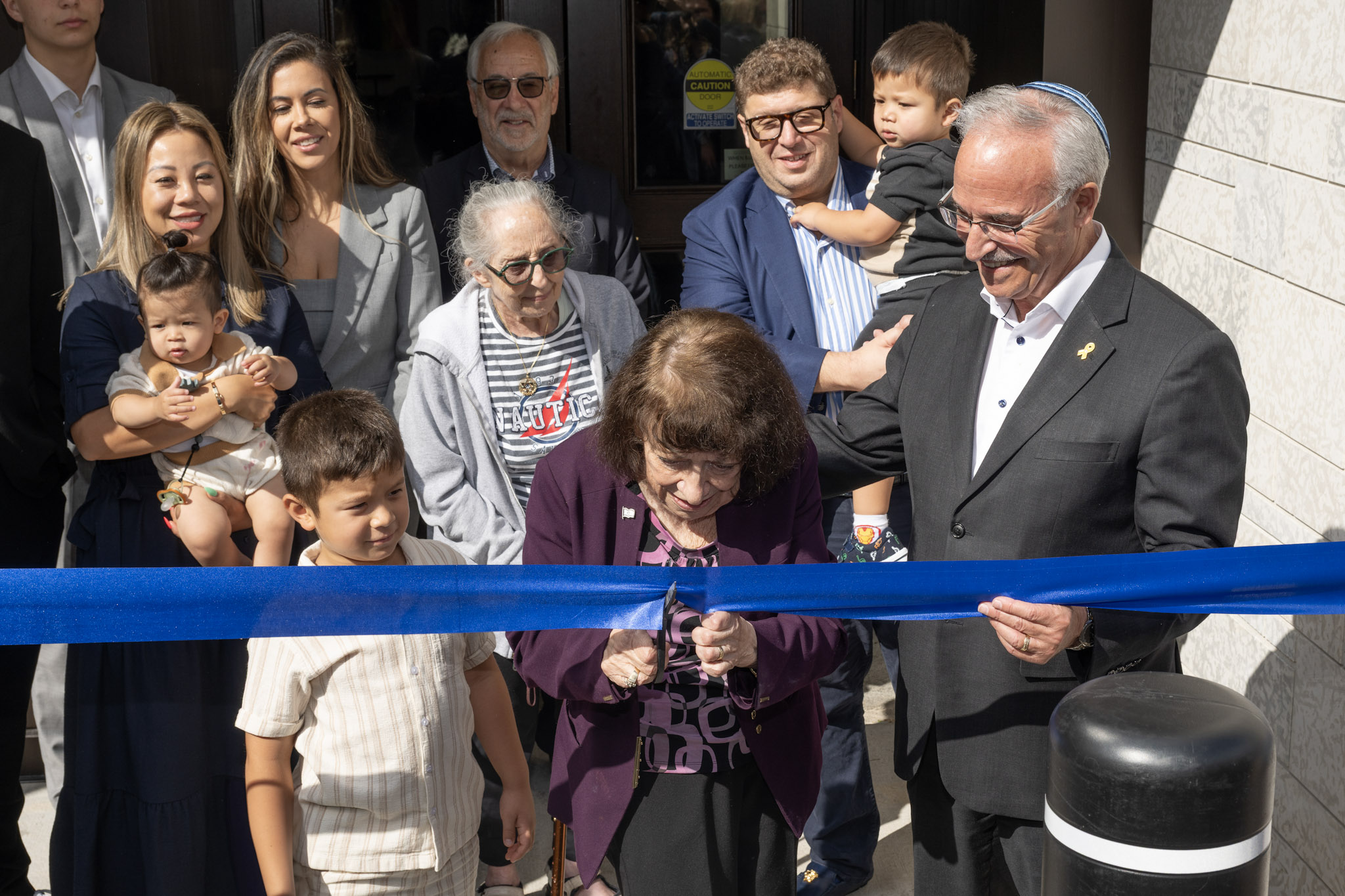
By MYRON LOVE In the words of Larry Vickar, the Shaarey Zedek’s successful Dor V’ Dor Campaign “is not only a renewal of the synagogue but truly a renewal movement of Jewish life in our community.”An integral part of that renewal movement was the creation of a daycare centre within the expanded synagogue. On Monday, June 23, Larry and Tova Vickar cut the ribbon, thereby officially opening the Tova Vickar and Family Childcare Centre in the presence of 100 of their family members, friends and other supporters of the project.
The short program preceding the morning ribbon-cutting began with a continental breakfast followed by a welcome by both Fanny Levy, Shaarey Zedek’s Board President, and Executive Director Dr. Rena Secter Elbaze. In Elbaze’s remarks, she noted that Larry and Tova wanted their family (including son Stephen and family, who flew in from Florida) and friends at the event to celebrate the opening of the Tova Vickar and Family Childcare Centre, “not because of the accolades, but because, as Larry put it, he hopes that their investment in the congregation will inspire others to do the same.”
“When Larry and I spoke about what this gift meant to him and the message he wanted people to take away,” she continued, “I couldn’t help but connect it to the teachings of Reb Zalman Schachter-Shalomi whose book – Age-ing to Sage-ing – changes the whole way we look at the concept of ageing and basing it on our ancestral teachings.”
She explained that his concept of “Sage-ing” is based on three key ideas – Discover your meaning and purpose; accept our mortality and think about the legacy you want to leave.
“Larry spoke about these exact concepts when we met,” she said.
Elbaze also noted the presence of Shaarey Zedek’s newly-arrived senior Rabbi Carnie Rose, former Rabbi Alan Green, and area MLAs Mike Moroz and Carla Compton.
Larry Vickar expressed his great appreciation for all those in attendance. “Tova and I are deeply moved to stand here with you today for this important milestone in our community”, he said. “We are grateful to be surrounded by all of you, the people we care about, our family and friends… you who have touched our lives and played some part in our journey.”
Local News
New Israeli restaurant opens in River Heights

By BERNIE BELLAN (July 6, 2025) It’s been a long time since our community has been able to welcome the opening of a restaurant that specializes in Israeli food.
That void is now filled with the opening of The Green Falafel, at 1833 Grant (corner of Centennial – next to the Subway), which opened its doors (to huge crowds) on Monday, July 7.

(owners Ariel & Elena Maudi second and third from left)
The restaurant is the fulfillment of a dream long held by the husband and wife team of Ariel and Eden Maudi, who have been living in Winnipeg the past 11 years.
Ariel, who was born in Israel and grew up in Beer Sheva, says that he worked in telecommunications in Ramat Gan for several years. He adds though that he had always dreamed of owning his own falafel stand in Israel, but life was difficult there and he decided to come to Canada as a tourist to see whether there were any opportunities here for him, Eden and their two young children.
Eden, who was born in Russia and moved to Israel with her family in 1996, stayed behind with the two kids, who were both pre-schoolers, while Ariel tested the waters in Canada first.
Ariel says he came to Canada as a tourist in 2013. His first stop was in Toronto, where he acquired his 1st class driver’s license. At the end of 2013 he moved to Winnipeg where he began working as a truck driver. Soon he found himself employed as a successful sales person at Vickar Nissan where, he says, he once achieved the status as the top car sales person in Canada. After working at Vickar Nissan for a number of years, Ariel began working as an installer for Bell MTS.
Meanwhile, Eden began working at a Walmart, later at the Costco on Regent.

But, when the opportunity to move into a space that had been previously occupied by another restaurant, but which had closed, became available, Ariel and Eden decided to open their own Israeli restaurant in an area that hadn’t seen Israeli food served since the controversial closure of Bermax Café in 2019.
The Maudis say that they will be serving a variety of Israeli dishes – all vegetarian, and that they will be fully kosher.
The “green” in Green Falafel, by the way, Ariel Maudi explains, comes from the cilantro and parsley that are added to the chickpeas. In addition, their pitas will be coming from Israel and will be baked fresh daily.
The Green Falafel is open from 10-8 Sunday – Thursday and 10-4 on Friday. (Closed Saturday).Delivery will be available through Uber Eats and DoorDash.
Call 204-557-7837 for information.
Local News
Previews of shows with Jewish performers at this year’s Fringe Festival July 16-27

For show dates and venues go to winnipegfringe.com
By BERNIE BELLAN As has been our custom for many years now we try to find shows that have either Jewish performers or themes that would have particular appeal for Jewish audiences. Many of the Jewish performers at this year’s festival have been here before, but several are new. In no particular order here are blurbs about the shows we’ve found that fit the criteria I’ve just described. (By they way, if we’ve omitted a show that should be included in our list there’s plenty of time to get added to this post. Just drop me a line at jewishp@mymts.net.)

You’ve Been Served: A One-Woman Show About Divorce, Cults, and Coming of Age at Midlife
Noemi Zeigler
You are hereby summoned… to laugh, cry, and maybe belt out a Streisand number in solidarity. You’ve Been Served is a raw and riotous solo comedy by writer-performer Noemi Zeigler. It all begins when Noemi is served divorce papers on top of a garbage bin lid while taking out the trash—an undignified start to a full-blown midlife unraveling.
At 50, still clinging to her dream of becoming a singer, she falls under the spell of a music producer slash self-help guru, joins a spiritual cult, and, instead of landing a record deal, she lands in jail. Behind bars, with help from her long-buried inner child, she begins to reclaim her voice and her power. Turns out, dreams really do come true—just not the way she expected.
The show features vividly drawn characters—including a manipulative cult leader, a toxic ex-husband, and a jail guard named Roach who shares Noemi’s obsession with the fashion of Charlie’s Angels (the ‘70s TV version, of course.)
With salsa dancing, twerking, and a belting rendition of Don’t Rain on My Parade, Zeigler dives into abandonment, reinvention, and self-rescue. As she confronts perimenopause, she discovers it’s not the end—it’s the new puberty. The show touches on grief, sexuality, and spiritual confusion, but Noemi’s childlike optimism asks: What if your breakdown is actually your breakthrough?
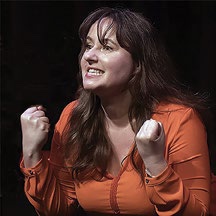
You’re good for nothing… I’ll milk the cow myself
Written & Performed by Natacha Ruck
France, 1981: The first socialist president is about to be elected and young Natacha is ready to implement her own political platform. But first, she has to take down the schoolyard bully,emasculate the rules of French grammar and make off with grandmother’s chocolate.
If you think you know the limits of Jewish mothers, evil grandmothers and transcontinental lovers, meet Natacha Ruck’s family. This true tale of three generations of women, facing three world wars, is equal parts hilarious, shocking and zany.

A One Human Being, Potentially Comedic Performance of Beauty and the Beast NEW WORK!
Written & Performed by Alli Perlov
Be our guest! Local high school drama teacher Alli Perlov is back for a tale as old as time. Can she sing? Not really. Can she act? That’s debatable. Will you laugh? Oh… probably.
Perlov plays dozens of characters, some human, some animal, and many objects, in a comedic exploration of Beauty and the Beast.
In an homage to this brilliant musical adventure, through witty commentary and unstoppable energy, Perlov aims to entertain an audience that isn’t forced to be there like her students.

Hockey Sticks and Beaver Pie
Written & Performed by Melanie Gall
Take a trip around Manitoba. From the 30,000 ft. St. Adolphe snow maze to the Narcisse snake dens! After all, where else holds both the title of Slurpee Capital of the World and the Guinness Record for the most people simultaneously howling like wolves?
Deanna Durbin, Terry Jacks and Burton Cummings are among the many homegrown stars, and Hockey Sticks features their music along with original songs and the stories that make this province unique.
Starring Melanie Gall from past shows Piaf & Brel, Ingenue and Toast to Prohibition
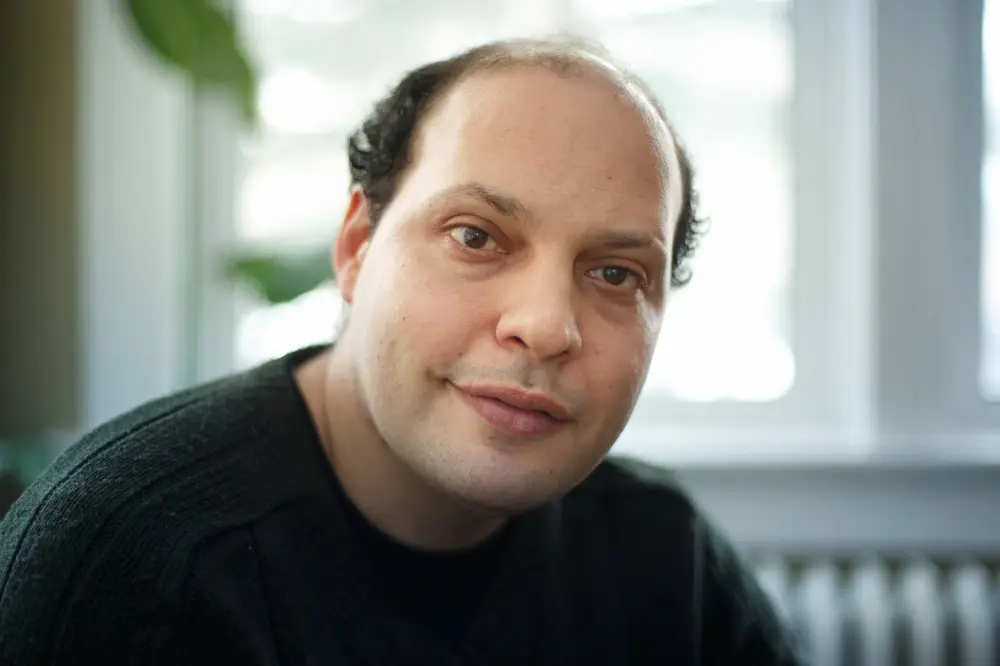
Nerohilarity Exposed
Produced by Adam Schwartz
We all sometimes feel exposed, whether that’s as a fraud or a pretender.
The performers of the award-winning Neurohilarity show, Danielle Kayahara (Laugh Out Loud CBC), Carole Cunningham (Yuk Yuks, The Debaters), Adam Schwartz (Winnipeg Fringe) and Rollin Penner (Yuk Yuks, CBC, Rumors, Winnipeg Comedy Festival), apply a comedic spin to the experiences that make us feel insecure, stripping away the emotional weight with nittygritty jokes and stories that will have you laughing uproariously.
Brilliantly awkward.

A Lesbian in the Kitchen
Willow Rosenberg
Professional lesbian Willow Rosenberg takes you on a journey through the centuries, superstitions and tablespoons of her lifelong passion for baking in this spiritual successor to 2024’s Jenny Award-nominated A Lesbian in a Bear Store.
Whether you have a favourite spatula, bake once or twice a year, or live in constant fear of being told to “just fold it in”, this one-woman show about family, joy, tradition (but make it gay),
Judaism, comfort, home (but make it gayer*), love, chemistry and magic is for you!
*Who’re we kidding, it’s all gay!

Eleanor’s Story: An American Girl in Hitler’s Germany
Written & Performed by Ingrid Garner
(Ed. note: Although Ingrid Garner isn’t Jewish, we thought the theme of this show might have a special appeal for Jewish readers.)
Based on Eleanor Ramrath Garner’s best-selling memoir, this 16x internationally award-winning adaptation – performed by her granddaughter, Ingrid Garner – details Eleanor’s youth as an American caught in Second World War Berlin.
Punctuated with humour and accompanied by cinematic sound and video, Garner embodies her ancestors in this coming-of-age odyssey, delivering an account of war that is more relevant than ever.
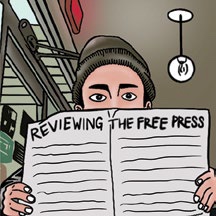
Reviewing The Free Press 2
Benji Rothman
The Winnipeg Free Press has run amok, reviewing each and every Fringe show over the past two decades without consequence or recourse. Now, it’s their turn… again.
In this refurbished work that debuted at last year’s Winnipeg Fringe, Benji Rothman once again takes the Winnipeg Free Press to task. In this (mostly) new, (hopefully) hilarious 45-minute show, Rothman dives deep into their past and exposes their faulty journalism, imbalanced reporting and, of course, embarrassing typos.
